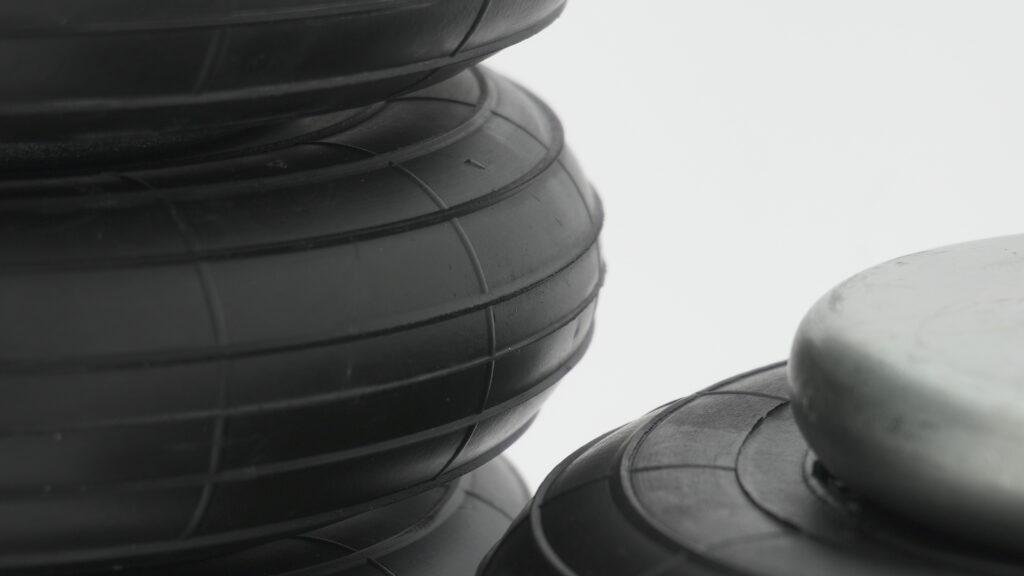
Despite their proven performance in industrial applications, many misunderstandings persist around air bellows and their usage. These misconceptions can lead to improper selection, poor performance, or even premature failure. In this article, we clarify the most common air bellows misconceptions, offering fact-based explanations that help engineers, buyers, and technicians make informed decisions. By separating myths from reality, users can optimize performance, extend product life, and reduce system failures. Air bellows are engineered components, and success depends on understanding their mechanical properties, installation guidelines, and application limitations. This overview addresses frequently misunderstood topics, such as vibration isolation, pressure capabilities, material behavior, and design flexibility.
Myth: Air Bellows Are Just Inflatable Bags
One of the common air bellows misconceptions is that they are simple rubber bladders. In reality, air bellows are precision-engineered structures. They consist of rubber covers, reinforced textile layers, and metal end closures. These elements work together to handle axial loads, absorb vibration, and allow controlled motion. The rubber is formulated for specific chemical, thermal, and fatigue resistance. The internal plies of nylon or polyester provide strength and dimensional stability. End closures made of galvanized or stainless steel ensure safe mounting and load transfer. Unlike basic inflatable devices, air bellows have defined load ratings, pressure limits, and stroke ranges. Treating them as “simple air bags” overlooks their engineering complexity and safety-critical role in industrial systems.
Myth: All Rubber Is the Same
Another widespread misunderstanding is assuming all air bellows use the same rubber. However, the type of rubber compound significantly affects performance. Natural rubber (NR/SBR) is used for general applications. NBR resists oils and fuel, making it ideal for hydraulic environments. EPDM handles steam and UV, while CIIR offers excellent acid resistance. Chloroprene (CR) adds weather and ozone durability. Each material has specific temperature, chemical, and aging characteristics. Using the wrong rubber compound can lead to early failure, cracking, or swelling. Material selection must match the operational environment. Assuming one compound fits all applications is a key air bellows misconception that can severely reduce product life and safety.
Myth: Air Bellows Cannot Handle High Loads
Many believe air bellows are suitable only for light-duty applications. In fact, modern designs can support loads up to 450 kN. Reinforced with multiple fabric plies and using four-ply constructions, they achieve exceptional burst strength and fatigue resistance. Properly selected air bellows replace steel coil springs, pneumatic cylinders, and shock mounts. Their ability to adapt to dynamic and static forces makes them ideal for heavy-duty presses, foundry machines, and large vibrating platforms. Load capacity depends on internal diameter, number of convolutions, and inflation pressure. Proper design allows a bellow to support high forces while maintaining low natural frequencies and high isolation performance. Underestimating their capacity is a critical misconception in many industries.
Myth: All Designs Work Interchangeably
It’s a mistake to assume all air bellows are interchangeable. Crimped, bead ring, and dismountable designs each serve specific applications. Crimped models are not removable but offer low-profile, cost-effective solutions. Bead ring designs allow for direct mounting to machinery, offering flexibility in replacement. Dismountable types with top and bottom plates enable quick serviceability and customized connections. Furthermore, single, double, and triple convolutions have distinct stroke and load characteristics. Application demands such as stroke range, vibration frequency, and spatial constraints must guide the selection. Mixing models without verifying specs or mounting formats leads to performance loss or installation failure. Understanding the role of each design avoids costly mismatches and downtime.
Myth: Air Bellows Require Complex Maintenance
Many avoid air bellows due to the belief that they are difficult to maintain. In fact, air bellows are generally maintenance-free. They have no sliding or rotating parts, unlike hydraulic cylinders. Their rubber construction resists wear and aging when properly installed. Regular checks involve visual inspection, pressure monitoring, and listening for leaks. If system air is clean and dry, little intervention is required over many years. Correct alignment, pressure regulation, and load control are more important than regular service. This makes air bellows ideal for applications requiring high uptime and low maintenance. Their simplicity often surprises users familiar with more complex actuation or isolation technologies.
Myth: Vibration Isolation Performance Is the Same for All Models
It is a common air bellows misconception to believe that all models provide similar isolation. In reality, isolation efficiency depends on the natural frequency, which varies with design, pressure, and load. Smaller bellows with fewer convolutions tend to have higher natural frequencies, which may amplify instead of isolate certain vibrations. Larger bellows with soft rubber compounds and higher internal volume offer better low-frequency isolation. Multi-convolution designs, especially double and triple convolutions, provide smoother force-deflection curves and wider stroke ranges. Properly selected air springs can achieve over 99% vibration isolation, while poorly matched units can amplify disturbances. Isolation performance must always be calculated based on actual application data.
Myth: Air Bellows Are Only for Isolation
Though known for vibration damping, air bellows also function as actuators. They generate linear motion by pressurization, with strokes up to 400 mm. Their ability to absorb lateral misalignments, tolerate tilt angles, and function in contaminated environments makes them ideal alternatives to pneumatic cylinders. Applications include clamping, lifting, pressing, and positioning. With fewer moving parts, they reduce wear and maintenance compared to traditional actuators. Their force output depends on internal diameter and pressure, offering a wide control range. The misconception that they serve only as passive isolators prevents their full potential from being realized in automation and control systems.
